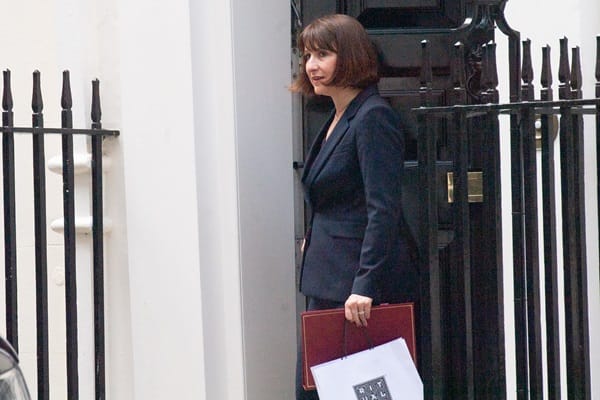The latest inflation figures paint a troubling picture for the UK economy. With consumer prices climbing to 3% in January—outpacing expectations and approaching double the Bank of England’s target—Britain stands at the precipice of stagflation.
This toxic mix of slowing growth and persistently high inflation threatens to erode living standards, strangle investment, and leave policymakers scrambling.
Worse still, misguided policies from Chancellor Rachel Reeves are accelerating the risks, potentially dragging Britain into an economic malaise not seen since the 1970s.
Stagflation occurs when an economy experiences both high inflation and weak growth—an environment that punishes businesses, squeezes households, and severely limits the government’s ability to respond effectively. The UK is already exhibiting warning signs.
Growth remains tepid, with consumer and business confidence faltering, yet inflation continues to rise above expectations.
The end of the VAT exemption for private school fees is just one example of policy-driven inflation, as Reeves’ policies inadvertently fan the flames of rising prices across multiple sectors.
The Bank of England’s projection of inflation peaking at 3.7% this year may even be too optimistic, as external shocks and policy missteps continue to mount.
Rachel Reeves has positioned herself as a steady economic hand, but her policy decisions tell a different story. By prioritising politically convenient taxation measures—such as the removal of VAT exemptions—over pro-growth strategies, she risks suffocating economic momentum.
Policies that increase tax burdens on businesses and households at a time of economic fragility act as a brake on growth, exacerbating the very conditions that lead to stagflation.
In addition, Reeves’ approach to public spending lacks the structural reform needed to rein in inflation. While targeted investment in infrastructure and innovation could drive long-term productivity growth, her administration has instead pursued short-term revenue grabs that provide little incentive for private sector expansion.
This myopic economic strategy risks discouraging capital formation, limiting wage growth, and dampening Britain’s economic dynamism just when it is most needed.
For investors, the return of stagflation is a nightmare scenario. High inflation erodes the real value of cash holdings, while slowing growth weakens corporate earnings, making traditional stock and bond investments more volatile.
Investors must now adopt a proactive strategy to preserve and grow their wealth in this challenging environment.
One crucial step is diversifying into inflation-resistant assets. Commodities, particularly gold, have historically served as a hedge against inflationary pressures. With economic uncertainty rising, gold’s appeal as a safe-haven asset is likely to strengthen, making it a prudent addition to portfolios.
Beyond commodities, investors should consider inflation-linked bonds, which provide protection as prices rise, offering a safeguard against further inflationary shocks. Real estate, particularly in sectors with strong pricing power, can also serve as an effective hedge, given its ability to pass rising costs onto tenants.
Additionally, exposure to global markets will be increasingly important. With the UK at heightened risk of stagflation, investors should look toward economies with stronger growth trajectories.
Emerging markets, sectors tied to technological innovation, and regions with more favourable monetary policies could provide better returns and greater stability compared to a UK market constrained by policy-driven inflation.
Investors can’t afford to be complacent. Now is the time to reassess portfolios, hedge against inflation, and seek growth opportunities beyond Britain’s increasingly fragile economy. If stagflation takes hold, those who’ve not positioned themselves accordingly could find themselves paying a heavy price for inaction.

